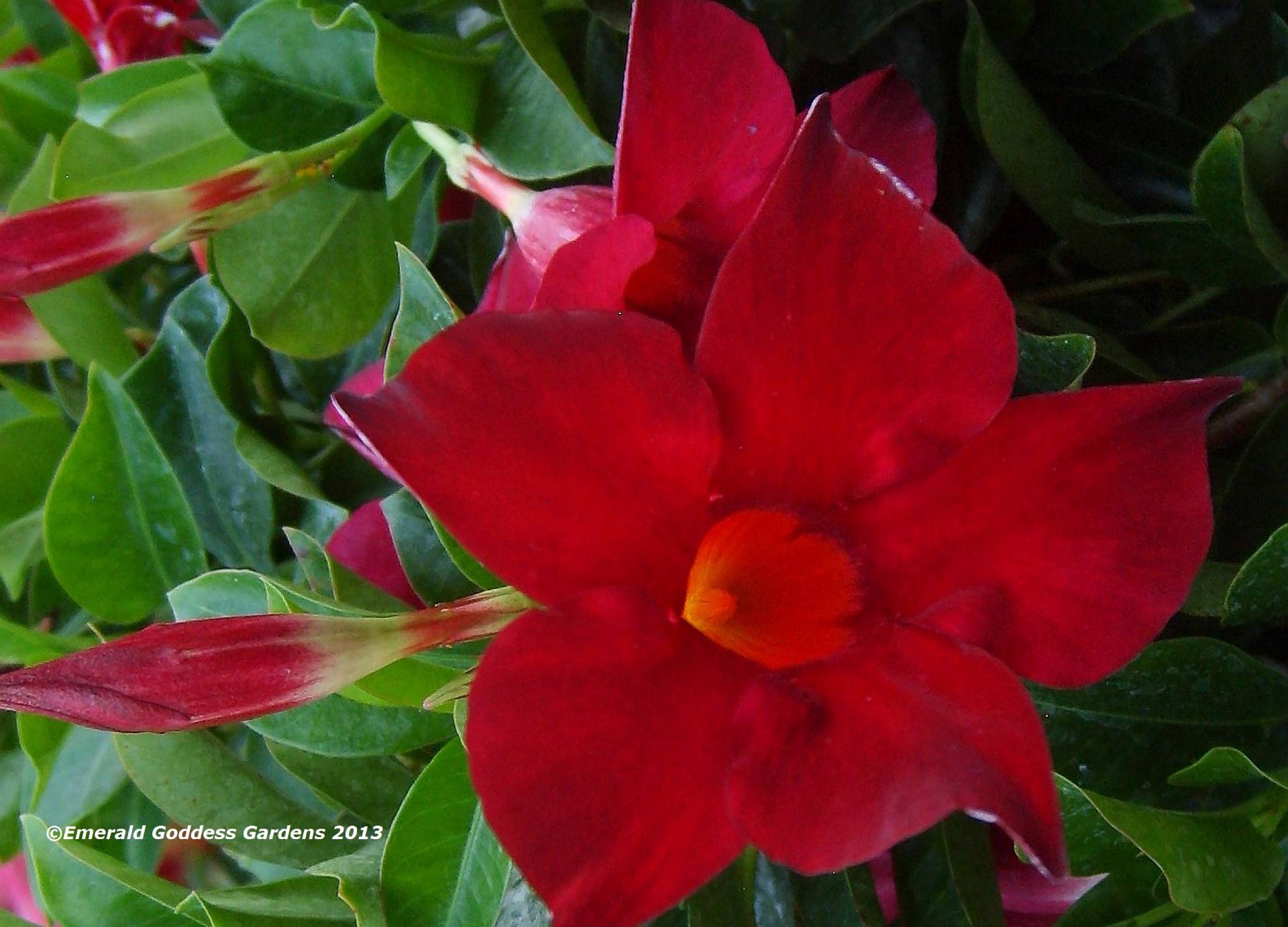The red flower vine plant, a captivating horticultural specimen, takes center stage in this informative exploration. Its scientific classification, cultivation practices, ornamental allure, and medicinal significance are meticulously examined, providing a comprehensive understanding of this botanical wonder.
Delving into the realm of taxonomy, we unravel the intricate lineage of the red flower vine plant, tracing its origins to its family, genus, and species. Distinctive characteristics that set it apart from its vine counterparts are meticulously highlighted, showcasing its unique botanical identity.
Plant Identification and Taxonomy: Red Flower Vine Plant
:max_bytes(150000):strip_icc()/best-flowering-vines-and-how-to-use-them-2130877-hero-ea0f64523e2640259ff2e0c1a37dc33c.jpg)
The red flower vine plant, scientifically known as Ipomoea quamoclit, belongs to the Convolvulaceae family. This family includes various flowering plants commonly referred to as morning glories.
Ipomoea quamoclit, specifically, is categorized under the genus Ipomoea, which comprises numerous vine species. It is further classified into the species quamoclit, distinguishing it from other species within the genus.
Unique Characteristics
- Cyathiform Flowers: The red flower vine is characterized by its distinctive cyathiform flowers, shaped like a trumpet or bell.
- Vibrant Red Hue: As its name suggests, the flowers exhibit a vibrant red coloration, adding a striking visual element to the plant.
- Delicate Foliage: The vine features delicate, feathery foliage that complements the showy flowers, creating an elegant and graceful appearance.
Cultivation and Care

Cultivating and caring for the red flower vine plant requires attention to specific conditions that support its growth and health. This includes understanding its propagation methods, ideal soil conditions, sunlight requirements, and watering needs. Additionally, it’s essential to be aware of common pests and diseases that may affect the plant and adopt appropriate management strategies.
Propagation
The red flower vine plant can be propagated through cuttings or seeds. For cuttings, select healthy stems and remove the leaves from the bottom inch or two. Dip the cut end into a rooting hormone and plant it in a well-draining potting mix. Keep the soil moist and provide bright, indirect light until the cutting has rooted.
To propagate by seeds, sow them directly in the garden in spring or start them indoors 6-8 weeks before the last frost. The seeds should be planted 1/4 inch deep in well-draining soil. Keep the soil moist and provide bright, indirect light until the seedlings have developed their first set of true leaves.
Soil Conditions
The red flower vine plant prefers well-drained, sandy loam soil with a pH of 5.5 to 6.5. It can tolerate a wide range of soil conditions, but it will not tolerate heavy, clay soils that are prone to waterlogging.
Sunlight Requirements, Red flower vine plant
The red flower vine plant requires full sun to partial shade. It will tolerate full shade, but it will not flower as profusely. In areas with hot summers, it is best to provide some afternoon shade to protect the leaves from sunburn.
Watering Needs
The red flower vine plant is drought-tolerant, but it will perform best if it is watered regularly, especially during hot, dry weather. Water the plant deeply and allow the soil to dry out slightly between waterings. Avoid overwatering, as this can lead to root rot.
Common Pests and Diseases
The red flower vine plant is relatively pest-free, but it can be susceptible to aphids, spider mites, and mealybugs. These pests can be controlled with insecticidal soap or neem oil. The plant can also be susceptible to fungal diseases, such as powdery mildew and leaf spot. These diseases can be controlled with fungicides.
Ornamental and Medicinal Uses

The red flower vine plant offers both aesthetic and medicinal value. Its vibrant blooms and lush foliage make it a popular choice for landscaping and gardening, while its traditional and modern medicinal uses have been documented for centuries.
In landscaping, the red flower vine is valued for its ability to quickly cover trellises, arbors, and other structures with a dense curtain of greenery and vibrant flowers. Its cascading habit and attractive foliage make it a suitable choice for hanging baskets and containers as well.
Medicinal Uses
The red flower vine has a long history of medicinal use in traditional medicine. Its leaves, flowers, and roots have been used to treat a variety of ailments, including fever, diarrhea, and skin conditions. Modern research has identified several potential therapeutic properties associated with the plant, including antioxidant, anti-inflammatory, and antimicrobial activities.
- Antioxidant activity: The red flower vine contains several antioxidant compounds, including flavonoids and polyphenols. These compounds help protect cells from damage caused by free radicals, which are unstable molecules that can contribute to chronic diseases such as cancer and heart disease.
- Anti-inflammatory activity: The plant has been shown to possess anti-inflammatory properties, which may be beneficial for reducing inflammation in conditions such as arthritis and asthma.
- Antimicrobial activity: The red flower vine has demonstrated antimicrobial activity against a variety of bacteria and fungi, suggesting potential applications in the treatment of infections.
While traditional and modern medicinal uses of the red flower vine show promise, it’s important to note that further research is needed to fully understand the safety and efficacy of the plant for medicinal purposes. As with any herbal remedy, it’s always advisable to consult with a qualified healthcare professional before using the red flower vine for medicinal purposes.